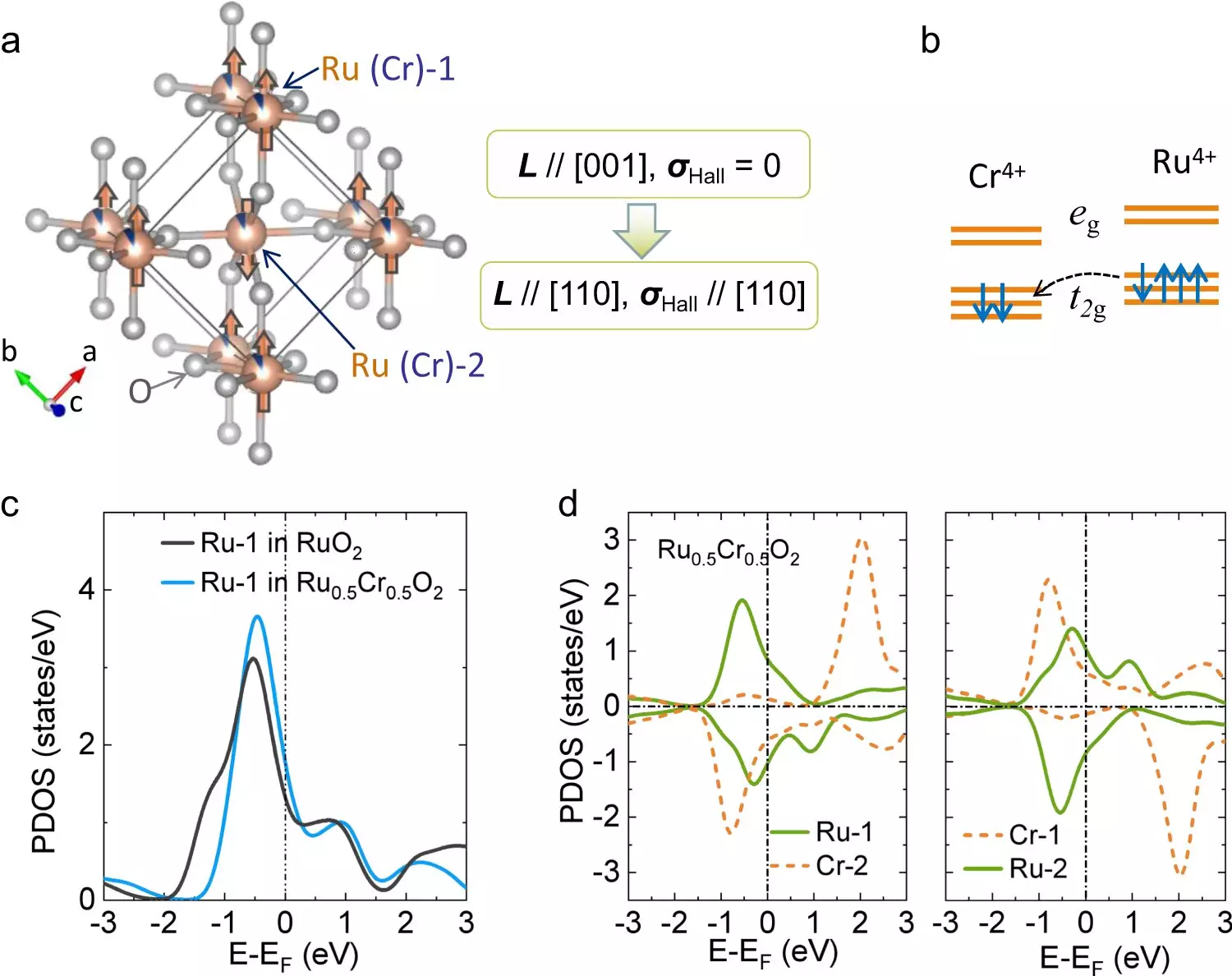In a groundbreaking development, physicists at RIKEN have created a new magnetic material that has the potential to revolutionize computer memory storage. Their research, recently published in the prestigious journal Nature Communications, showcases the immense possibilities of this discovery. By enabling higher memory density and faster memory writing speeds, this new material could pave the way for a new era in data storage technology.
Memory devices such as hard disks rely on ferromagnetic materials like iron and cobalt to store data. These materials work by creating different magnetization patterns, but they come with their own set of limitations. Neighboring areas can often interfere with each other, leading to spontaneous magnetization that can corrupt data. This issue restricts the memory density that can be achieved with ferromagnets. Additionally, the process of switching magnetization patterns in these materials is slow, further hindering the efficiency of data storage systems.
Antiferromagnetic materials present a promising solution to the limitations of ferromagnets. In antiferromagnets, the magnetic fields of adjacent atoms align in opposing directions, reducing the risk of interference between neighboring areas. Physicists have been exploring the potential of utilizing the “anomalous Hall effect” in certain antiferromagnetic materials to manipulate electrons for data storage and retrieval. This phenomenon could open up new possibilities for enhancing memory devices.
The anomalous Hall effect, a unique behavior in antiferromagnetic materials, has captured the interest of physicists for over two decades. Unlike the conventional Hall effect observed in non-magnetic materials, the anomalous Hall effect causes electrons to exhibit bending in their path even in the absence of an external magnetic field. This intriguing behavior has the potential to revolutionize the way data is encoded and read out in memory devices.
Meng Wang and his colleagues at RIKEN have achieved a significant milestone by demonstrating the anomalous Hall effect in an antiferromagnetic metal composed of ruthenium and oxygen. Remarkably, this demonstration was achieved without the need for an external magnetic field by introducing a small amount of chromium to the crystal structure. This modification enabled the material to exhibit the anomalous Hall effect, showcasing its potential for practical applications.
The simplicity and ease of fabrication of the antiferromagnetic metal discovered by the RIKEN team make it a promising candidate for future memory storage technologies. Its ability to support the anomalous Hall effect in a straightforward co-linear structure sets it apart from other complex antiferromagnetic materials. With the potential for thin film fabrication, this material holds the key to unlocking higher memory density and faster memory writing speeds in computer memory storage systems.
The advancements made by the physicists at RIKEN in developing a new magnetic material with the anomalous Hall effect have the potential to reshape the landscape of computer memory storage. By addressing the limitations of traditional ferromagnetic materials and harnessing the unique properties of antiferromagnets, this breakthrough opens up exciting possibilities for the future of data storage technology.


Leave a Reply